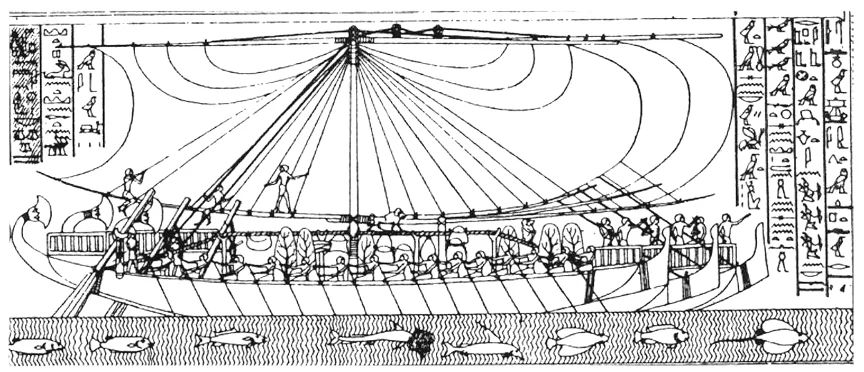Why the name Nehesi?
The name of the ship is a tribute to the Egyptian navigator of the same name who, crossing the Red Sea, reached the country of Punt – near present-day Somalia – as an envoy of the pharaoh Hatshepsut, around the year 1464 BC.
This successful voyage – an unprecedented nautical feat in its day – served to establish a long-lasting commercial route, which later became the first major stage of the well-known Spice Route, shaping economic and cultural exchanges between Asia and Europe for centuries. Historians define Nehesi’s expedition to the country of Punt as “the beginning of economic globalisation.”

The logo
Hatshepsut did not go down in history as the most famous of the pharaohs (an honour reserved for Cleopatra), but she was the most powerful and held power for the longest time in Ancient Egypt. Her reign of more than twenty years was epoch-making and was an extended period of peace and prosperity, allowing large-scale trade to flourish.
Nehesi’s journey was in fact one of the most important achievements of her reign, and for this reason it occupies a prominent place in the bas-reliefs engraved on the walls of the funerary temple where the pharaoh was buried, at Deir el-Bahari, in the heart of the Valley of the Kings. In these bas-reliefs, both Nehesi’s journey and the exotic produce that she succeeded in bringing from Punt to Egypt are recounted in detail: live animals such as baboons or dogs and exotic or previously unknown items, such as incense trees, ivory, myrrh, cinnamon, ebony and cosmetics, among other rarities.
Our logo was inspired by these bas-reliefs; in particular, the image of the incense tree that sailed with Nehesi and summarises the achievements of her nautical feat.

